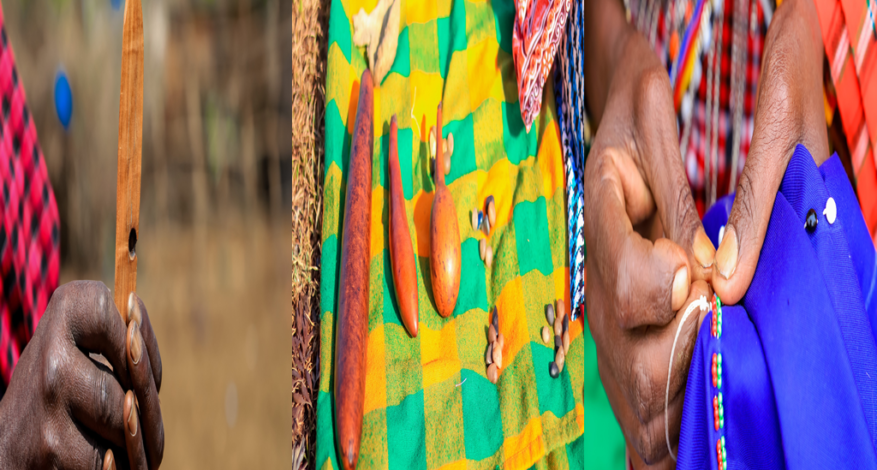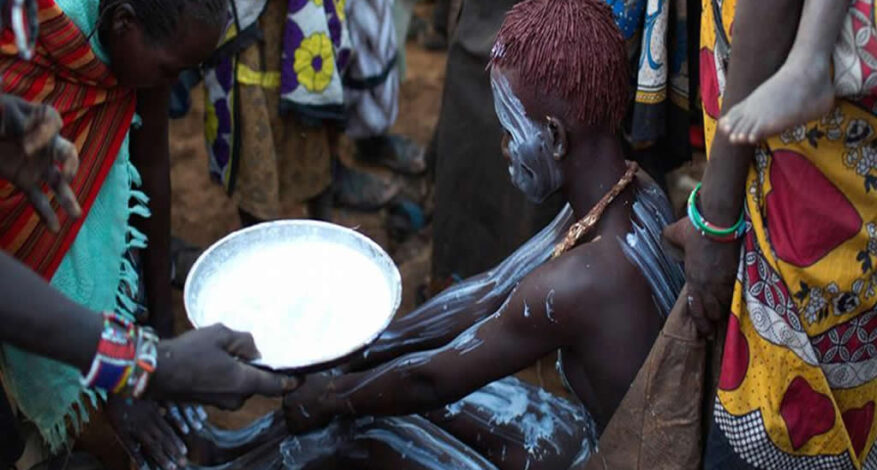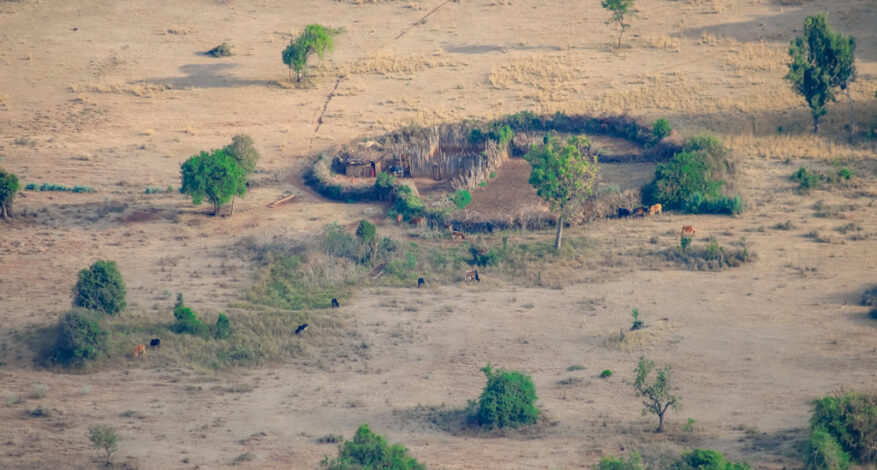Maasai Heritage Culture And Origin
Origin, Migration and Assimilation
According to their oral history, the Maasai originated from the lower Nile valley north of Lake Turkana (Northwest Kenya) and began migrating south around the 15th century. They arrived to a long land mass, stretching from what is now northern Kenya to central Tanzania between the 17th and late 18th century.
Settlement in East Africa
The Maasai territory reached its largest size in the mid-19th century, and covered almost all of the Great Rift Valley and adjacent lands, from Mount Marsabit in the north to Dodoma in the south. At this time the Maasai, as well as the larger Nilotic group they were part of, raised cattle as far east as the Tanga coast in Tanganyika (now mainland Tanzania). Raiders used spears and shields, but were most feared for throwing clubs (orinka) which could be accurately thrown from up to 70 paces (well over 100 yards).
Starting with a 1904 treaty, and followed by another in 1911, Maasai lands in Kenya were reduced by 60 percent when the British evicted them to make room for settler ranches, subsequently confining the Maasai to present-day Samburu, Laikipia, Kajiado and Narok districts.
Maasai in Tanganyika (now mainland Tanzania) were displaced from the fertile lands between Mount Meru and Mount Kilimanjaro, and most of the fertile highlands near Ngorongoro in the 1940s. More land was taken to create wildlife reserves and national parks: Amboseli National Park, Nairobi National Park, Maasai Mara, Samburu National Reserve, Lake Nakuru National Park and Tsavo in Kenya; and Lake Manyara, Ngorongoro Conservation Area, Tarangire[22] and Serengeti National Park in Tanzania.
Maasai are pastoralist and have resisted the urging of the Tanzanian and Kenyan governments to adopt a more sedentary lifestyle. They have demanded grazing rights to many of the national parks in both countries.
Maasai land now has East Africa’s finest game areas. Maasai society never condoned trafficking of human beings, and outsiders looking for people to enslave avoided the Maasai.
The Maasai are a Nilotic ethnic group inhabiting northern, central and southern Kenya and northern Tanzania. They are among the best known local populations internationally due to their residence near the many game parks of the African Great Lakes, and their distinctive customs and dress. The Maasai speak the Maa language. Some have become educated in the official languages of Kenya and Tanzania, Swahili and English. The Maasai population has been reported as numbering 841,622 in Kenya in the 2009 census, compared to 377,089 in the 1989 census.
The Maasai people stood against slavery and lived alongside most wild animals with an aversion to eating game and birds.
Bead Working
Done by women, bead working has a long history among the Maasai, who articulate their identity and position in society through body ornaments and body painting. Visitors to the Enjoolata Center can watch and interact with the Maasai women making traditional jewelry and other beaded items.
Before contact with Europeans, the beads were produced mostly from local raw materials. White beads were made from clay, shells, ivory, or bone. Black and blue beads were made from iron, charcoal, seeds, clay or horn. Red beads came from seeds, woods, gourds, bone, ivory, copper or brass.
When late in the nineteenth century, great quantities of brightly colored European glass beads arrived in Southeast Africa, bead workers replaced the older beads with the new materials and began to use more elaborate color schemes. Currently, dense, opaque glass beads with no surface decoration and a naturally smooth finish are preferred.
Shelter
As an historically nomadic and then semi-nomadic people, the Maasai have traditionally relied on local, readily available materials and indigenous technology to construct their housing. The traditional Maasai house was designed for people on the move and was thus very impermanent in nature.
Constructed by able-bodied women, the houses are either somewhat rectangular shaped with extensions, or are circular.
The structural framework is formed of timber poles fixed directly into the ground and interwoven with a lattice of smaller branches, called wattle. The wattle is then plastered with a mix of mud, sticks, grass, cow dung, human urine, and ash. The cow dung ensures that the roof is waterproof. The home pictured – enkaj or engaji – is small, measuring about 10 x 15 feet and standing only five feet high. Within this space, the family cooks, eats, sleeps, socializes, and stores food, fuel, and other household possessions. Small livestock are also often accommodated within the enkaji.
Villages are enclosed in a circular fence (an enkang) built by the men, usually of thorned acacia, a native tree. At night, all cows, goats, and sheep are placed in an enclosure in the center, safe from wild animals.
At the Enjoolata Center, visitors can experience life in a traditional Maasai compound, and see how homes are built today just as they have been for generations.
Music and Dance
Maasai music traditionally consists of rhythms provided by a chorus of vocalists singing harmonies while a song leader, or olaranyani, sings the melody. The olaranyani is usually the singer who can best sing that song, although several individuals may lead a song.
The olaranyani begins by singing a line or title (namba) of a song. The group will respond with one unanimous call in acknowledgment, and the olaranyani will sing a verse over the group’s rhythmic throat singing. Each song has its specific namba structure based on call-and-response. Common rhythms are variations of 5/4, 6/4 and 3/4 time signatures. Lyrics follow a typical theme and are often repeated verbatim over time. Neck movements accompany singing. When breathing out, the head is leaned forward. The head is tilted back for an inward breath. Overall the effect is one of polyphonic syncopation. Unlike most other African tribes, Maasai widely use drone polyphony.
Women chant lullabies, humming songs, and songs praising their sons. Nambas, the call-and-response pattern, is repetition of nonsense phrases and monophonic melodies. Repeated phrases following each verse are sung on a descending scale, and singers responding to their own verses are characteristic of singing by females. When many Maasai women gather together, they sing and dance among themselves.
Visitors to Basecamp will have several opportunities to observe and enjoy these traditional songs and dances, performed by Maasai men and women.
Preserving the Culture of Cattle, Sustainably
Traditionally a Maasai man’s wealth and status was determined by his number of cattle and number of children. We are training herders about grazing practices so that grazing is sustainable and the eco-system is healthy. We are also encouraging better cattle genetics, with herders attaining same value with less cattle. The improved quality means cows can be sold directly to safari camps for meat. These efforts help to preserve and sustain the core of the Maasai culture, which is cattle.



